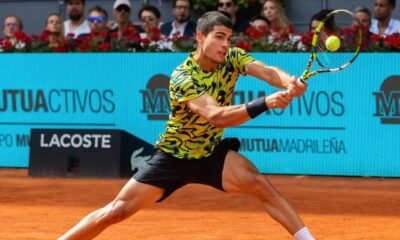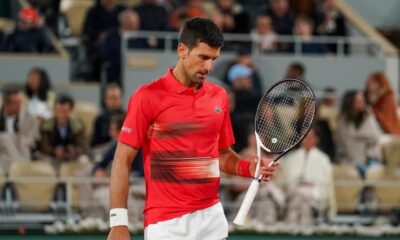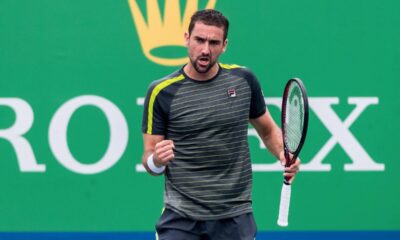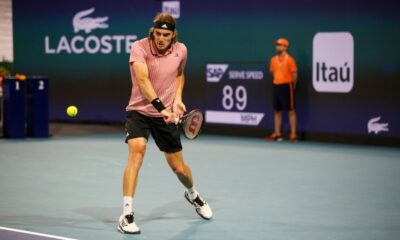Tennis
Thousands of players are not playing tennis for a living and are asking the ATP for changes. Will they happen?
In the past tennis years, we have often witnessed statements from tennis players complaining about unfair distribution of rewards. A number of tennis players on the lower rungs of the ATP rankings have claimed in the media that the elite 100 are living like a feather in their cap and everyone else is rather destitute.
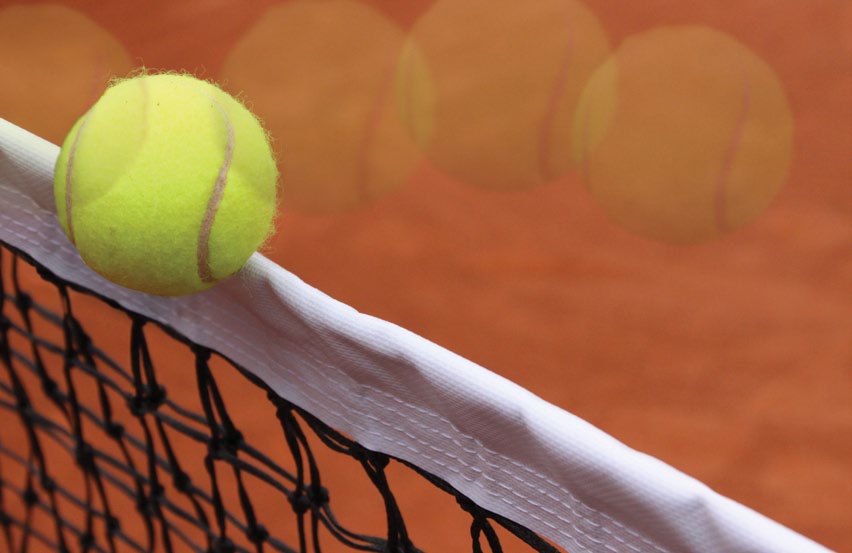
In the past tennis years, we have often witnessed statements from tennis players complaining about unfair distribution of rewards. A number of tennis players on the lower rungs of the ATP rankings have claimed in the media that the elite 100 are living like a feather in their cap and everyone else is rather destitute.
The complaints of the lower-ranked players have not resulted in any groundbreaking solutions. Only crumbs in the form of an increase in prize money at the grand slams in the opening rounds, which in itself does little to address the core of the problem. Only a minority of the world’s second 100 still make it to the big four tournaments. The ATP organization has made other changes year-on-year that should help even players moving outside the boundaries of luxury.
The debate over inadequate remuneration has been stirred by the declaration of Sumit Nagal, India’s number one tennis player. The winner of four tournaments on the challenger tour and former world number 100 shared across the tennis world his bank account balance of just 900 euros. “You can spend anything in tennis,” Nagal said.
According to him, tennis fans are used to seeing packed players’ boxes at tournaments, to which tennis players often turn with clenched fists during a duel after a winning ball or a successful exchange.
The world’s elite players bring coaches, fitness coaches, physiotherapists, mental coaches to tournaments. Some travel with their whole family, but it all costs a lot of money. The really renowned coaches cost players up to ten thousand euros a week.
The winner of an ATP 250 event will take home (before tax) around 85,000 euros, tennis players receive 6 to 7 thousand euros for the first round, and around 10,000 euros for the eighth round. It is already evident here that if you are paying coaches for the above amounts, some of the eighth round will cover the weekly cost of the coach alone. Where are your physiotherapist, equipment, travel and personal expenses?
What does it look like outside of the ATP top 100?
To make sure we don’t just talk about the top players here, let’s take a random look at the players outside the top 100 and their results this year. We’ll start with the 100th player in the world, Hugo Gaston. He has earned approximately 400,000 euros in tennis this year.
If Gaston had a less expensive coach, whom he would have paid say €5,000 a week, that’s €250,000 in 50 weeks. So he has to spend 150,000 euros a year on living expenses, equipment, food, travel and hotels, which is not much, but we are still talking about a virtually top 100 player. He played the first round of the French Open, for which he cashed 69,000 euros, which is about seventeen percent of his total annual income.
For some tennis players, participating in the main event of a Grand Slam can be downright crucial to their tennis season. Rudolf Molleker holds the twentieth place in the ATP rankings. The twenty-three-year-old German tennis player had a very solid season this year, winning fifty-four matches and the Prague Challenger. His prize money for 2023 is about 66,000 eurosbefore taxes, and that is already a substantial difference.
This amount is quite minimal to survive on the ATP tour and provide for the basic needs of a player. In 2017, an official study came out that calculated all the costs of a player for a tennis season. The amount was at a minimum of 150,000 euros for a top 50 player. The best ones spend even 1.5 to 2 million euros per year. Of course, the amounts will vary a lot. It all depends on whether the tennis player travels the world or plays local competitions.
Will there be a change?
The situation surrounding the financial difficulties of lower-ranked players is set to change in the coming periods with a breakthrough in the ATP bonus pool. It has been set at 33.5 million US dollars. In real terms, this is an increase of more than $20 million. This initiative should balance the financial interests of players and tournaments. After all, this vision was already conceived in 2020 when Andrey Gaudenzi was elected to the position of President of the ATP organization.
The problem, however, is that this amount will only be distributed to those players who participated in ATP Masters tournaments and will be charged in addition to the prize money. Currently, there are nine Masters 1000 tournaments in the season, in Indian Wells, Miami, Monte Carlo, Madrid, Rome, Toronto/Montreal (the cities rotate each year), Cincinnati, Shanghai and Paris.
Each of these tournaments will undergo financial audits during the season. For the first time in tennis history, each tournament will reveal its financial overview, which should build trust and transparency. The total profits generated by the tournament will then be split exactly 50:50 between the players and the tournament.
The formula for dividing the rewards between the tournament and the players was introduced as one of the pillars of the ATP’s strategic plan. Simply ro means that any pre-tax profits above the base prizes are split 50/50 with the players.
Thus, for the first time in history, tennis players virtually share their earnings with the tournament. The whole process works in three steps. First, the entire tournament is played as standard and the player receives prize money for his or her score. Then, after the tournament is over, there will be an audit, which will be separate for each Masters tournament.
Profits are then aggregated for the entire group of tournaments. If these profits then exceed the value of the total base prizes paid out in that category in that year, the excess will be split 50:50 between the players and the tournament.
Will the problem be solved?
In 2022 under this formula, players received $12.2 million per season. By comparison, that’s over twenty percent of the additional prize money earned. It’s certainly a helpful move from the ATP organization, but we can debate whether it solves the problem of Indian tennis player Sumit Nagal, who played one qualifying match at the Masters this year.
In general, the whole thing seems to be that the ATP organization is showering huge amounts of money on players who are in the elite 100 in the rankings and are making more and more money every year. On the other hand, we have challengers. These are mostly rounded by players in the second and third hundred and the remuneration there is not quite ideal.
Also, the challengers are divided by category. There is still a huge hole in tennis between those who collect millions just for participating in the biggest tournaments and those who play twice the number of challengers and don’t get even a fraction of what the elite 100 players get.
Of course, there is no discussion here about tennis players who are in the top 10 and their quality is enormous. Rather, it’s about those who don’t have those less-than-perfect results but somehow manage to stay at least in the top 100. That in itself is a ticket to the world of luxury.
There is probably no doubt that enough money exists for players outside the elite 100, who often struggle to survive all year round. The constant focus on increasing the prize money at Grand Slams has been a live issue for many years. Unfortunately, so much so that it has overshadowed some of the ATP’s moves towards lower-tier tournaments.
In 2022, the rewards on the Challenger Tour will increase by approximately twenty-five percent globally. In 2023, there was a reorganization and the ATP poured an additional nine million US dollars into the challenger tour.
Source: ATP Tour, ITF Tennis

